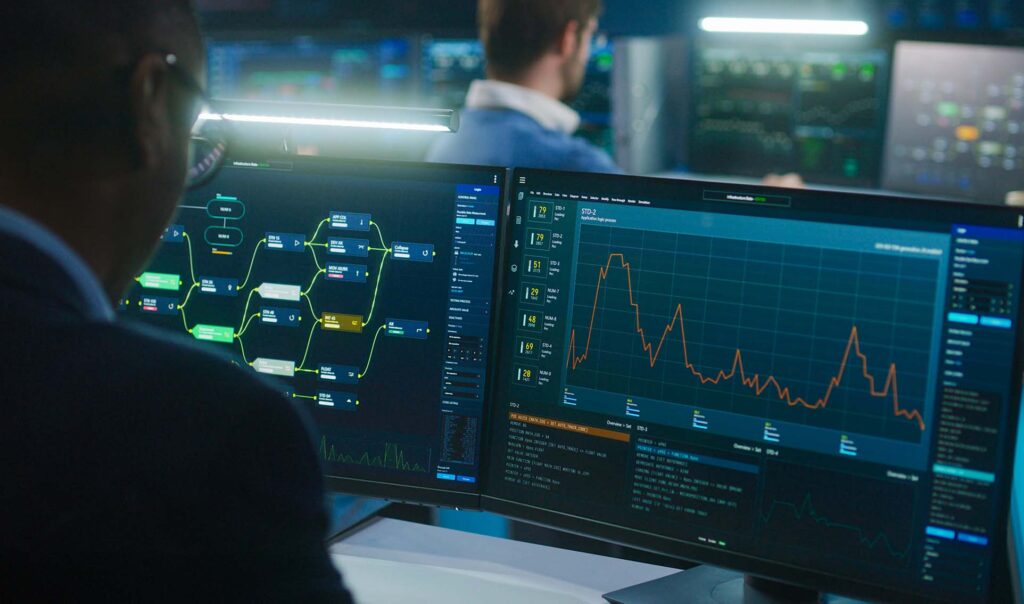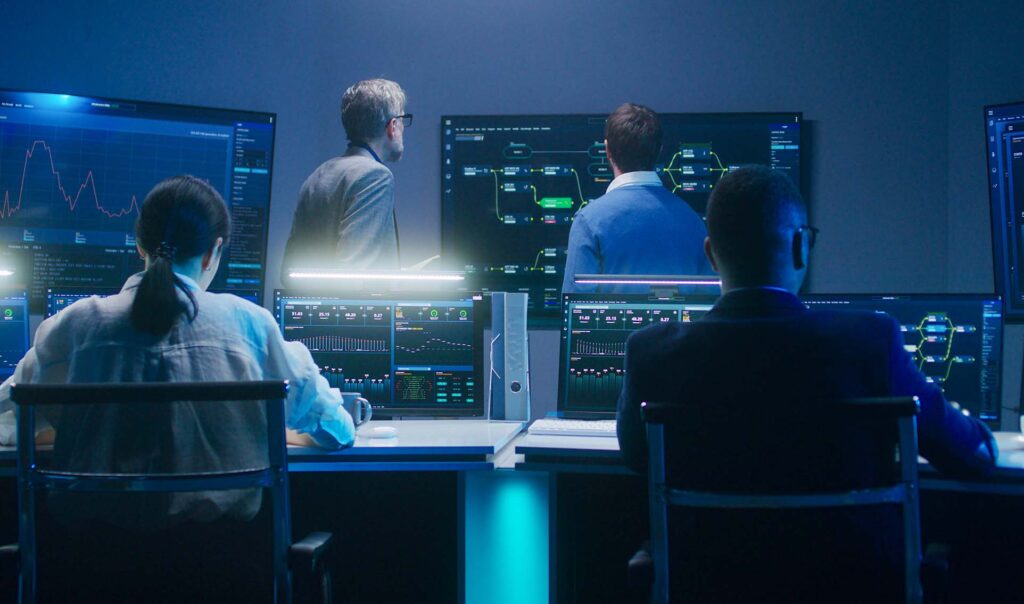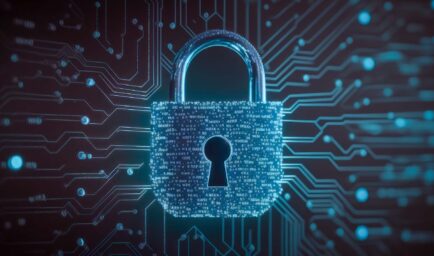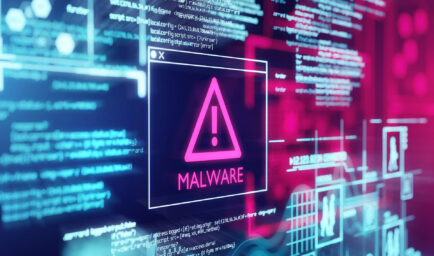Constant Vigilance: The Importance of Continuous Cybersecurity Monitoring
While some may believe cybersecurity is confined to IT, this business issue touches nearly every aspect of an institution. The consequences of a cybersecurity breach are far-reaching and include financial, operational and reputational repercussions. As cybercriminals evolve their tactics and methods of exploitation, continuous cybersecurity monitoring helps your institution mitigate risk and prevent security incidents.
As a financial institution, customer or member data is one of your most important assets—and it’s critical to keep it secure. Continuous monitoring helps ensure data remains safe and any threats are expeditiously detected. This blog explores the benefits of cybersecurity monitoring to combat evolving cyber risks and provides insight into the importance of cybersecurity awareness.
Download our white paper to learn more about strengthening your institution’s cybersecurity posture.
What is Continuous Cybersecurity Monitoring?
Financial institutions face cyber threats around the clock, so institutions must continually monitor their networks, systems and applications. Continuous cybersecurity monitoring uses automated tools that collect and analyze data from different sources, including logs of user behavior, to help detect cyberattacks as they occur.
Cybersecurity tools provide visibility into an institution’s entire network and detect suspicious activity—including unusual login attempts, data exfiltration, malware and more—in real time. This allows security teams to efficiently respond and remediate threats. Continuous cybersecurity monitoring uses a combination of tools, which can include SIEM systems, endpoint detection or even antivirus software. Using multiple tools provides increased visibility and creates layers of protection, so if a threat penetrates one layer, others are in place to defend the organization.
In today’s digital-first world, where applications and users are increasingly interconnected, we are moving toward a borderless network of sorts. Knowing how your users log in to your network and access data is critical. Cybersecurity monitoring provides insight into all areas, including the cloud and your external perimeter.
By identifying where suspicious activity occurs, your institution can remediate any security incidents before they become a large threat. The sooner an incident is detected, the greater chance you can minimize the damage. Deploying the appropriate controls and conducting continuous monitoring will give your institution an edge in the fight against cyber threats.

How Does Cybersecurity Monitoring Work?
As previously discussed, cybersecurity monitoring gives your institution an inside look at the activity occurring on your systems and alerts you of suspicious behavior. A common attack involves a hacker targeting cloud-hosted applications, including Office 365 email accounts. The normal attack vector for this type of attack is phishing, with Statista reporting that nearly a quarter of phishing attacks worldwide were directed toward financial institutions during the first quarter of 2022. In this scenario, an employee receives an email prompting them to click a link, open an attachment or navigate to a website to provide their login credentials. Taking any of these actions allows a fraudster to inject malicious code or malware onto the device, giving them access to information to compromise accounts. In some cases, attackers will then attempt to gain access to email systems at financial institutions to complete a funds transfer.
Another attack that demonstrates the importance of continuous cybersecurity monitoring is a malware-based attack. For example, imagine an employee finds a USB drive with a label that piques their curiosity, such as “important documents” or “payroll information.” Once the drive is inserted into a computer, it injects malware onto the device. With cybersecurity monitoring tools like endpoint detection and response (EDR), security teams would receive an alert and isolate the threat, preventing the malware from reaching the entire network.
Since managing ongoing cybersecurity threats presents a challenge for many internal IT leaders, many institutions partner with a trusted managed security services provider (MSSP) to leverage an entire team of security professionals for threat monitoring and remediation.
Choosing a Cybersecurity Partner
Partnering with an MSSP adds even more protection and allows you to take advantage of the organization’s existing security controls and other technologies, such as a managed detection and response (MDR) platform. An MDR service monitors an institution’s networks, endpoints and even cloud environments using various tools—including EDR and SIEMaaS—and provides support to remediate threats. These tools send alerts to the internal IT team or an outsourced security operations center when suspicious activity is detected. This allows for real-time investigation and remediation, two benefits of advanced monitoring.
Further, a trusted partner familiar with the regulatory requirements of the financial services industry can help your institution remain compliant. An MSSP can also work with your institution to prepare for upcoming audits or exams. If your institution does partner with an MSSP, be sure to review and test security controls when conducting vendor due diligence.
In today’s world, cybersecurity monitoring, policies and procedures must include traditional physical perimeters and network connections to encompass every connection point an institution has with consumers and employees. A financial institution that understands current threats, actively secures systems and mitigates risk by working with an industry-focused provider is likely more difficult to breach, which can encourage criminals to look elsewhere for a less prepared victim.

How to Mitigate Evolving Cyber Risk
When it comes to cyber risk, the only constant is change. New technologies often represent new risks, and cybercriminals constantly adapt their tactics to exploit vulnerabilities in the latest technologies. That’s why institutions must keep track of the latest tactics as the technology landscape evolves.
As an example of this evolving landscape, many institutions are accelerating cloud migrations. When servers reach end-of-life, it’s becoming more common for institutions to choose a cloud migration rather than replacing or upgrading an on-site server. Similarly, traditional voice systems are being replaced with communication applications like Microsoft Teams or Slack. While these technologies offer benefits, they also introduce new risks to the institution, such as file sharing. Whereas employees once had phone conversations, they can now easily share files and data through these applications—resulting in the risk of sensitive data leaving your network.
Data loss prevention (DLP) software helps ensure your sensitive data doesn’t leave your network, including the cloud. DLP tools give your institution control over data sharing by allowing you to identify sensitive information and apply policies to prevent data from leaving your system. This includes preventing an employee from printing data, copying it to an external hard drive or executing an electronic transfer. DLP solutions deliver policy violation alerts, allowing for real-time incident investigation. By correlating your DLP tools into your MDR platform, your institution can further enhance monitoring and protection.
Go Beyond Cybersecurity Monitoring by Investing in Your People
While hardware and software contribute to your institution’s cybersecurity posture, the human element should not be ignored. Cybersecurity education is a strategy often underused by institutions to mitigate risk effectively.
Your employees can be your greatest defense or weakest link, depending on their level of cybersecurity education. Just one click to open a malicious attachment in an email can send the dominoes cascading in a line for a successful ransomware attack or another damaging security incident. But employees that are knowledgeable of prevalent risks will be less likely to inadvertently aid in a breach.
While your institution should educate internal staff on cybersecurity risks, don’t overlook the importance of educating customers or members. Security-conscious consumers lower the risk level for institutions. Think of it this way: A consumer following cybersecurity best practices is less likely to be the victim of a breach, and in turn, your institution is less likely to spend time and resources reimbursing the consumer and responding to a breach’s effects.
Consider these tips when planning your institution’s cybersecurity awareness program—both internally and externally.
- Tailor campaigns: Your awareness campaigns should have information relevant to different audiences, e.g., employees in various departments or your customers or members. When it comes to cybersecurity, each audience has different concerns or needs, so plan your messaging accordingly.
- Think creatively: Employees and consumers are bombarded with information constantly, so create a relevant and compelling message that will break through the noise and stick.
- Deliver actionable tips: In addition to providing education about threats, ensure your employees, customers or members know what to do if they encounter a suspicious email, phone call or text message. Providing actionable tips and insight—including validating the sender of suspicious emails, enabling multi-factor authentication and changing passwords—also helps position your institution as a trusted knowledge source.
- Leverage digital channels: Consider how your audience consumes information—it’s likely in a digital medium. Using digital channels also allows you to reach a broader audience by not limiting the size or scope of an educational event to physical locations.

Stay One Step Ahead of Cybersecurity Threats
Regarding cybersecurity, your approach should be proactive—not reactive. Being proactive by continuously monitoring your systems and deploying layers of defenses will mitigate your risk and make it more difficult for a cybercriminal to carry out a successful attack against your institution.
Want to take a deeper dive into cybersecurity? Read our white paper for additional insight into strengthening your cybersecurity posture.

Sean Martin has worked to establish cybersecurity programs for financial institutions for over 15 years. Previously, Sean has served as Network and Security Operations Manager, Product Manager, and various engineering roles since 2001. In his role, Sean identifies and implements solutions designed to maximize security and profitability for financial institutions. Sean speaks regularly on a variety of financial technology issues, ranging from managed services to IT security best practices.

